
Understanding Transactional Analysis: Analyzing Human Behavior and Relationships
https://www.youtube.com/watch?v=jsYwmeVSrHohttps://www.youtube.com/watch?v=4TVdALiqv3ohttps://www.youtube.com/watch?v=sV0k63PKRUohttps://www.youtube.com/watch?v=qRV5nZXjCgg%20https://www.youtube.com/watch?v=MwhJqtOMenoUnderstanding Transactional Analysis
Transactional Analysis (TA) is a psychological theory and method developed by Eric Berne in the 1950s. It focuses on analyzing and understanding human behavior, communication, and relationships. TA provides a framework for examining how individuals interact with one another and how their past experiences shape their present actions and decisions.
Strokes in Transactional Analysis
In the context of Transactional Analysis, “strokes” refer to the basic units of recognition, attention, and communication that individuals give and receive from each other. Strokes can be verbal or non-verbal, and they play a crucial role in shaping our self-esteem and sense of worth.
The Four Types of Strokes
In Transactional Analysis, strokes can be classified into four main types:
- Unconditional Positive Strokes: These are genuine, sincere, and affirming messages of recognition and appreciation that are given to individuals without any conditions or expectations. They convey a sense of value and worthiness. Examples of unconditional positive strokes include:
- A genuine compliment on someone’s work or achievements
- A warm hug or a pat on the back to show support
- An encouraging smile or nod of approval
- An expression of gratitude for someone’s help or contribution
- A sincere “thank you” for someone’s presence or friendship
- Conditional Positive Strokes: These strokes are given to individuals based on certain conditions or expectations. They are often used as rewards for meeting specific criteria or standards. Examples of conditional positive strokes include:
- Praising someone only when they achieve a certain goal
- Providing recognition or rewards based on performance evaluations
- Offering compliments or approval when someone conforms to expectations
- Giving attention or acknowledgment in exchange for favors or compliance
- Showing affection or appreciation only when certain conditions are met
- Unconditional Negative Strokes: These strokes involve negative or critical messages that individuals receive without any apparent reason or justification. They can be damaging to self-esteem and can create a sense of unworthiness. Examples of unconditional negative strokes include:
- Harsh criticism or belittling comments
- Ignoring or dismissing someone’s ideas or opinions
- Mocking or ridiculing someone’s appearance or abilities
- Constantly finding faults or pointing out mistakes
- Using sarcasm or derogatory language towards someone
- Conditional Negative Strokes: These strokes are given to individuals as a form of punishment or disapproval when they fail to meet certain expectations or criteria. Examples of conditional negative strokes include:
- Expressing disappointment or disapproval when someone makes a mistake
- Withdrawing attention or affection as a consequence of non-compliance
- Using guilt or shame to manipulate someone’s behavior
- Rejecting or isolating someone for not meeting certain standards
- Imposing consequences or punishments for undesirable actions
Strokes Economy
Strokes economy refers to the balance between giving and receiving strokes in relationships. It is important to maintain a healthy and balanced exchange of strokes to promote positive communication and emotional well-being. When there is an imbalance in strokes economy, it can lead to conflicts, emotional distress, and a negative impact on relationships.
Tips to Increase Unconditional Positive Strokes
Here are some tips to increase the frequency of unconditional positive strokes in your interactions:
- Show genuine appreciation: Take the time to acknowledge and express gratitude for the positive qualities and actions of others.
- Offer encouragement: Provide support and encouragement to others, especially during challenging times.
- Practice active listening: Pay attention and show interest in what others have to say, validating their thoughts and feelings.
- Be kind and empathetic: Show kindness and empathy towards others, offering comfort and understanding when needed.
- Be mindful of your words: Use positive and uplifting language when interacting with others, avoiding unnecessary criticism or negativity.
By consciously incorporating these tips into your interactions, you can increase the presence of unconditional positive strokes, fostering a more supportive and nurturing environment.
Learn More
Understanding Flow in Positive Psychology
https://www.youtube.com/watch?v=Iz6DnG47a9whttps://www.youtube.com/watch?v=pZ5wV2AcWbMhttps://www.youtube.com/watch?v=LAwgD_YxRgM&t=4shttps://www.youtube.com/watch?v=lJQsPlAkCAo&t=2shttps://www.youtube.com/watch?v=-7TwMUyWSE0&t=1s
YOU CAN SEE THE COMPLETE IMMERSION AND FOCUS IN ALL THE ABOVE ACTIVITIES, SO THAT THEY HAVE ACHIEVED GREATNESS IN LIFE
Understanding Flow in Positive Psychology
In positive psychology, flow refers to a state of complete immersion and focus in an activity, where one experiences a sense of energized focus, full involvement, and enjoyment. Coined by psychologist Mihaly Csikszentmihalyi, flow is characterized by a deep sense of satisfaction and fulfillment, often described as being “in the zone.”
During flow, individuals are fully engaged in an activity, losing track of time and experiencing a sense of effortless concentration. They are motivated intrinsically, finding the activity itself rewarding and enjoyable. Flow can occur in a variety of contexts, such as work, hobbies, sports, or creative pursuits.
Flow is often associated with several key components: In Jo-Harry window, if some one is having more of open area, they can FEEL the FLOW more easily.
The Jo-Hari Window: Understanding Self-Awareness
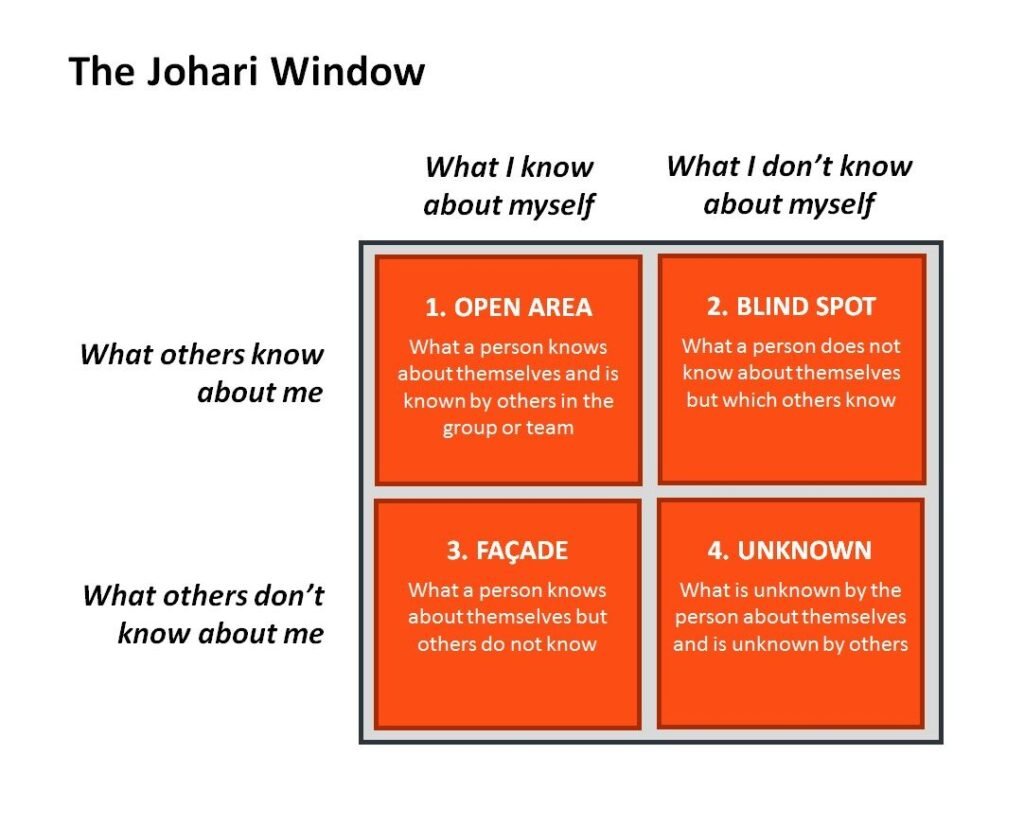
johari window
The Jo-Hari Window is a psychological tool used to enhance self-awareness and improve interpersonal communication. It was developed by psychologists Joseph Luft and Harry Ingham, hence the name Jo-Hari. The window consists of four quadrants that represent different aspects of our self-awareness:
Examples of the Four Quadrants of the Jo-Hari Window
1. Open Area: This quadrant represents the aspects of ourselves that are known to us and others. It includes our behaviors, attitudes, and feelings that we openly express. For example, if someone is confident and outgoing, these traits would be part of their open area.
2. Blind Spot: The blind spot quadrant represents aspects of ourselves that others can see, but we are unaware of. These are often blind spots in our behavior or personality that we may not recognize. For example, someone may have a tendency to interrupt others during conversations without realizing it.
3. Hidden Area: The hidden area represents aspects of ourselves that we are aware of, but choose not to reveal to others. These may include personal thoughts, fears, or insecurities. For example, someone may have a fear of public speaking but keep it hidden from others.
4. Unknown Area: The unknown area represents aspects of ourselves that are unknown to both us and others. These may include unconscious thoughts, repressed memories, or undiscovered talents. As we gain self-awareness, some aspects of the unknown area may shift into other quadrants.
Applications of the Jo-Hari Window in Counseling
The Jo-Hari Window is widely used in counseling and therapy settings to facilitate self-awareness, personal growth, and improved communication. Some of the key applications include:
1. Increasing Self-Awareness: The Jo-Hari Window helps individuals gain a clearer understanding of their own strengths, weaknesses, and blind spots. By exploring the different quadrants, individuals can identify areas for personal growth and development.
2. Enhancing Communication: The Jo-Hari Window can be used to improve interpersonal communication by increasing mutual understanding and empathy. By sharing information from the hidden and blind spot quadrants, individuals can build trust and strengthen relationships.
3. Managing Conflict: The Jo-Hari Window can be a valuable tool in resolving conflicts. By identifying areas of disagreement or misunderstanding, individuals can work towards finding common ground and developing effective solutions.
4. Facilitating Personal Development: The Jo-Hari Window can be used to guide personal development and self-improvement efforts. By expanding the open area and reducing the blind spot, individuals can enhance their self-confidence, self-esteem, and overall well-being.
Why the Open Area in the Jo-Hari Window Should Be More
The open area in the Jo-Hari Window should ideally be more extensive because it promotes self-awareness, transparency, and effective communication. When the open area is larger, individuals have a better understanding of their own strengths and weaknesses, which allows them to make informed decisions and take appropriate actions.
A larger open area also fosters trust and authenticity in relationships. When individuals are open and honest about their thoughts, feelings, and intentions, it creates a safe space for open dialogue and understanding. This can lead to stronger connections, improved collaboration, and more effective problem-solving.
Furthermore, a larger open area enables individuals to receive feedback and learn from others. By being receptive to feedback, individuals can gain valuable insights about themselves and make necessary adjustments for personal growth.
In conclusion, the Jo-Hari Window is a powerful tool for self-awareness and interpersonal communication. By understanding the four quadrants and focusing on expanding the open area, individuals can enhance their personal and professional relationships, promote personal growth, and cultivate a more fulfilling life.
Learn More
Understanding Cognitive Behavioral Therapy (CBT) and Automatic Negative Thoughts
Cognitive Behavioral Therapy (CBT) is a widely-used therapeutic approach that focuses on the connection between thoughts, feelings, and behaviors. It aims to help individuals identify and change negative thought patterns and behaviors that contribute to their emotional distress. CBT is based on the belief that our thoughts influence our emotions and actions, and by altering our thinking patterns, we can improve our well-being.
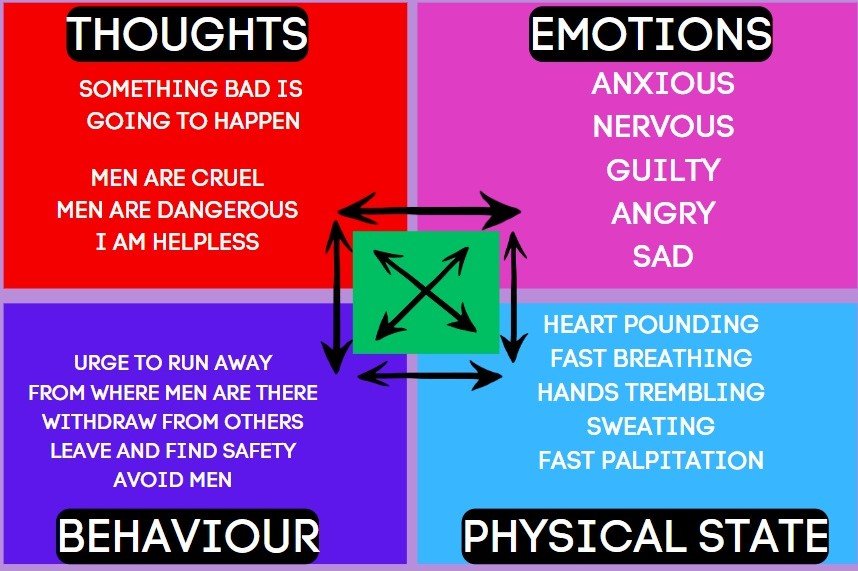
CBT – CROSS BUN MODEL
One of the key concepts in CBT is the Cross Bun Model Theory, which illustrates the relationship between thoughts, feelings, behaviors, and physical sensations. This model helps individuals understand how their thoughts can impact their emotions and behaviors, and vice versa. By recognizing these connections, individuals can gain insight into their negative thought patterns and work towards changing them.
Another important concept in CBT is the Cognitive Triad. This refers to the three core areas of negative thinking that can contribute to emotional distress: negative thoughts about oneself, negative thoughts about the world, and negative thoughts about the future. These negative beliefs can perpetuate a cycle of negative emotions and behaviors, and CBT aims to challenge and reframe these thoughts to promote more positive and realistic thinking.
Automatic Negative Thoughts (ANTs) are a common feature of various mental health conditions, including post-traumatic stress disorder (PTSD), obsessive-compulsive disorder (OCD), suicidal thoughts, depression, and anxiety. ANTs are negative thoughts that arise automatically and often without conscious control. These thoughts can be irrational, distorted, and self-defeating, and they can significantly impact an individual’s well-being.
Here are 10 examples of automatic negative thoughts that individuals suffering from PTSD may experience:
1. “I am constantly in danger.”
2. “I can’t trust anyone.”
3. “It’s my fault that this happened to me.”
4. “I’ll never be able to move on from this trauma.”
5. “I’m always on edge and something bad is about to happen.”
6. “I’m a failure because I couldn’t prevent this from happening.”
7. “I’m damaged beyond repair.”
8. “I’ll never be able to have healthy relationships again.”
9. “I’m not worthy of love or happiness.”
10. “I’ll never be able to forget or overcome this traumatic experience.”
Similarly, individuals with OCD may experience the following automatic negative thoughts:
1. “If I don’t perform this ritual, something terrible will happen.”
2. “I’m contaminated and need to constantly clean and wash.”
3. “I’m responsible for preventing harm to myself and others.”
4. “If I don’t check and recheck, something bad will happen.”
5. “I’m a terrible person for having these intrusive thoughts.”
6. “I need to have everything in perfect order, or else chaos will ensue.”
7. “I can’t trust my own judgment and need constant reassurance.”
8. “If I don’t follow my compulsions, something bad will happen to my loved ones.”
9. “I’m powerless against my obsessions and compulsions.”
10. “If I don’t perform my rituals perfectly, something bad will happen.”
Individuals with suicidal thoughts may experience the following automatic negative thoughts:
1. “Life is unbearable, and there’s no way out.”
2. “Nobody cares about me or my pain.”
3. “I’m a burden to everyone around me.”
4. “There’s no hope for things to get better.”
5. “I’m better off dead than living in this pain.”
6. “Nobody would miss me if I were gone.”
7. “I’m too weak to keep going.”
8. “I’ve failed at everything in life, and there’s no point in trying anymore.”
9. “I’m trapped and there’s no escape from this suffering.”
10. “I don’t deserve to be happy or have a fulfilling life.”
Individuals with depression may experience the following automatic negative thoughts:
1. “I’m worthless and a failure.”
2. “Nothing ever goes right for me.”
3. “I’ll never be happy again.”
4. “I don’t deserve love or happiness.”
5. “I’m a burden to my loved ones.”
6. “I can’t do anything right.”
7. “I’m always going to feel this way.”
8. “I’m destined to be alone and miserable.”
9. “I’m not good enough for anyone or anything.”
10. “I’ll never achieve anything meaningful in life.”
Individuals with anxiety may experience the following automatic negative thoughts:
1. “Something bad is going to happen.”
2. “I can’t handle this situation.”
3. “I’m going to embarrass myself in front of others.”
4. “I’m constantly being judged by others.”
5. “I’m not capable of coping with stress.”
6. “I’m always on the verge of a panic attack.”
7. “I’m never going to be able to relax or feel at ease.”
8. “I’m always going to feel overwhelmed and anxious.”
9. “I’m not safe in this environment.”
10. “I’m going to fail at everything I do.”
Women suffering from physical abuse may experience the following automatic negative thoughts:
1. “It’s my fault that I’m being abused.”
2. “I deserve this treatment because I’m not good enough.”
3. “I can’t escape this abusive relationship.”
4. “I’m powerless to defend myself.”
5. “I’m not worthy of love and respect.”
6. “I’ll never be able to have a healthy and safe relationship.”
7. “I’m trapped and there’s no way out.”
8. “I’m too weak to leave the abusive situation.”
9. “I’m ashamed and embarrassed about the abuse.”
10. “I’ll never be able to recover from the trauma of the abuse.”
It is important to note that automatic negative thoughts are not based on reality and can perpetuate a cycle of negative emotions and behaviors. CBT aims to help individuals identify and challenge these thoughts, replacing them with more realistic and positive thinking patterns. Through therapy and practice, individuals can learn to reframe their thoughts and improve their overall well-being.
Learn MoreUnderstanding Cognitive Behavioral Therapy (CBT) and Automatic Negative Thoughts
Cognitive Behavioral Therapy (CBT) is a widely-used therapeutic approach that focuses on the connection between thoughts, feelings, and behaviors. It aims to help individuals identify and change negative thought patterns and behaviors that contribute to their emotional distress. CBT is based on the belief that our thoughts influence our emotions and actions, and by altering our thinking patterns, we can improve our well-being.
One of the key concepts in CBT is the Cross Bun Model Theory, which illustrates the relationship between thoughts, feelings, behaviors, and physical sensations. This model helps individuals understand how their thoughts can impact their emotions and behaviors, and vice versa. By recognizing these connections, individuals can gain insight into their negative thought patterns and work towards changing them.
Another important concept in CBT is the Cognitive Triad. This refers to the three core areas of negative thinking that can contribute to emotional distress: negative thoughts about oneself, negative thoughts about the world, and negative thoughts about the future. These negative beliefs can perpetuate a cycle of negative emotions and behaviors, and CBT aims to challenge and reframe these thoughts to promote more positive and realistic thinking.
Automatic Negative Thoughts (ANTs) are a common feature of various mental health conditions, including post-traumatic stress disorder (PTSD), obsessive-compulsive disorder (OCD), suicidal thoughts, depression, and anxiety. ANTs are negative thoughts that arise automatically and often without conscious control. These thoughts can be irrational, distorted, and self-defeating, and they can significantly impact an individual’s well-being.
Here are 10 examples of automatic negative thoughts that individuals suffering from PTSD may experience:
1. “I am constantly in danger.”
2. “I can’t trust anyone.”
3. “It’s my fault that this happened to me.”
4. “I’ll never be able to move on from this trauma.”
5. “I’m always on edge and something bad is about to happen.”
6. “I’m a failure because I couldn’t prevent this from happening.”
7. “I’m damaged beyond repair.”
8. “I’ll never be able to have healthy relationships again.”
9. “I’m not worthy of love or happiness.”
10. “I’ll never be able to forget or overcome this traumatic experience.”
Similarly, individuals with OCD may experience the following automatic negative thoughts:
1. “If I don’t perform this ritual, something terrible will happen.”
2. “I’m contaminated and need to constantly clean and wash.”
3. “I’m responsible for preventing harm to myself and others.”
4. “If I don’t check and recheck, something bad will happen.”
5. “I’m a terrible person for having these intrusive thoughts.”
6. “I need to have everything in perfect order, or else chaos will ensue.”
7. “I can’t trust my own judgment and need constant reassurance.”
8. “If I don’t follow my compulsions, something bad will happen to my loved ones.”
9. “I’m powerless against my obsessions and compulsions.”
10. “If I don’t perform my rituals perfectly, something bad will happen.”
Individuals with suicidal thoughts may experience the following automatic negative thoughts:
1. “Life is unbearable, and there’s no way out.”
2. “Nobody cares about me or my pain.”
3. “I’m a burden to everyone around me.”
4. “There’s no hope for things to get better.”
5. “I’m better off dead than living in this pain.”
6. “Nobody would miss me if I were gone.”
7. “I’m too weak to keep going.”
8. “I’ve failed at everything in life, and there’s no point in trying anymore.”
9. “I’m trapped and there’s no escape from this suffering.”
10. “I don’t deserve to be happy or have a fulfilling life.”
Individuals with depression may experience the following automatic negative thoughts:
1. “I’m worthless and a failure.”
2. “Nothing ever goes right for me.”
3. “I’ll never be happy again.”
4. “I don’t deserve love or happiness.”
5. “I’m a burden to my loved ones.”
6. “I can’t do anything right.”
7. “I’m always going to feel this way.”
8. “I’m destined to be alone and miserable.”
9. “I’m not good enough for anyone or anything.”
10. “I’ll never achieve anything meaningful in life.”
Individuals with anxiety may experience the following automatic negative thoughts:
1. “Something bad is going to happen.”
2. “I can’t handle this situation.”
3. “I’m going to embarrass myself in front of others.”
4. “I’m constantly being judged by others.”
5. “I’m not capable of coping with stress.”
6. “I’m always on the verge of a panic attack.”
7. “I’m never going to be able to relax or feel at ease.”
8. “I’m always going to feel overwhelmed and anxious.”
9. “I’m not safe in this environment.”
10. “I’m going to fail at everything I do.”
Women suffering from physical abuse may experience the following automatic negative thoughts:
1. “It’s my fault that I’m being abused.”
2. “I deserve this treatment because I’m not good enough.”
3. “I can’t escape this abusive relationship.”
4. “I’m powerless to defend myself.”
5. “I’m not worthy of love and respect.”
6. “I’ll never be able to have a healthy and safe relationship.”
7. “I’m trapped and there’s no way out.”
8. “I’m too weak to leave the abusive situation.”
9. “I’m ashamed and embarrassed about the abuse.”
10. “I’ll never be able to recover from the trauma of the abuse.”
It is important to note that automatic negative thoughts are not based on reality and can perpetuate a cycle of negative emotions and behaviors. CBT aims to help individuals identify and challenge these thoughts, replacing them with more realistic and positive thinking patterns. Through therapy and practice, individuals can learn to reframe their thoughts and improve their overall well-being.
Learn More
Understanding CBT and Core Beliefs: Types and Examples
What is CBT?
Cognitive Behavioral Therapy (CBT) is a widely recognized form of psychotherapy that focuses on the connection between our thoughts, feelings, and behaviors. It is a goal-oriented and evidence-based approach that helps individuals identify and change unhelpful patterns of thinking and behavior.
What is a Core Belief in CBT?
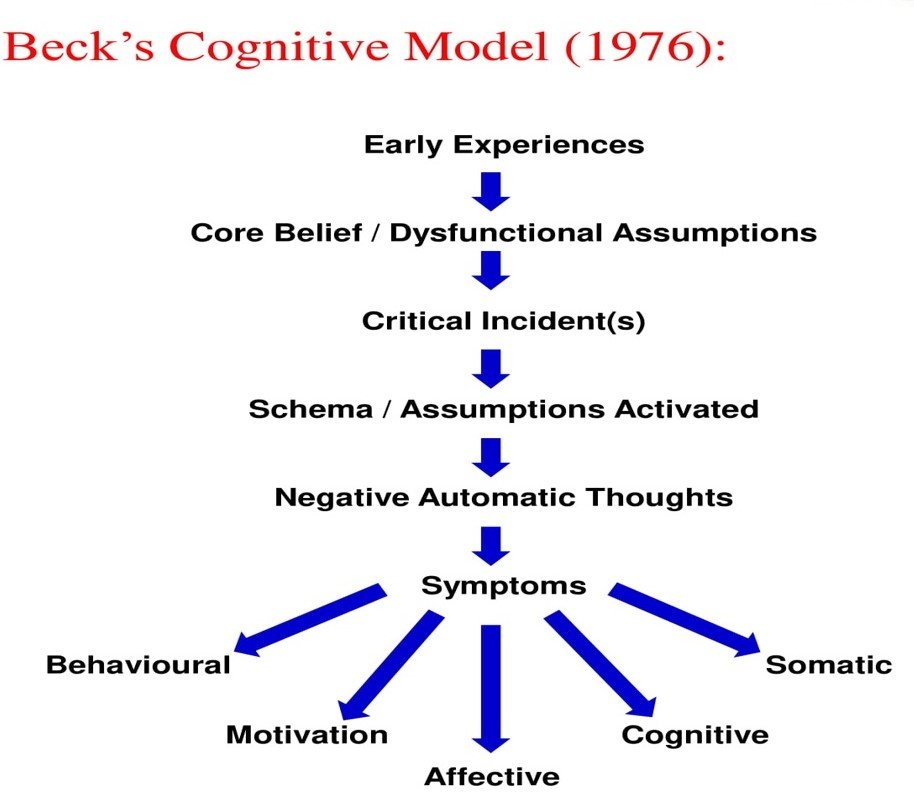
In CBT, core beliefs are deeply ingrained beliefs that individuals hold about themselves, others, and the world around them. These beliefs are often formed during childhood and can shape our perceptions, emotions, and actions. Core beliefs are considered to be the lens through which individuals interpret and make sense of their experiences.
Types of Core Beliefs in CBT
There are three types of core beliefs commonly identified in CBT:
- Core Beliefs about the Self: These beliefs relate to one’s worth, abilities, and identity. Examples include “I am unworthy,” “I am incompetent,” or “I am unlovable.”
- Core Beliefs about Others: These beliefs pertain to how individuals perceive and interact with others. Examples include “People are untrustworthy,” “Others will always reject me,” or “People are out to get me.”
- Core Beliefs about the World: These beliefs involve one’s views on the world and their place in it. Examples include “The world is a dangerous place,” “Life is unfair,” or “Nothing ever goes right for me.”
Examples of Negative Core Beliefs
Here are 20 examples of negative core beliefs:
- I am worthless.
- I am a failure.
- I am unlovable.
- I am stupid.
- I am always to blame.
- Others will abandon me.
- People are out to get me.
- I will never be successful.
- I am a burden to others.
- I am not good enough.
- People will always betray me.
- I am powerless.
- I am fundamentally flawed.
- Nothing I do matters.
- I am always rejected.
- I don’t deserve happiness.
- I am a disappointment.
- I will never be happy.
- Life is meaningless.
- I am always alone.
What are Automatic Negative Thoughts?
Automatic Negative Thoughts (ANTs) are the spontaneous and often unconscious thoughts that arise in response to specific situations or triggers. These thoughts are typically negative and can contribute to negative emotions and behaviors. ANTs are a key focus in CBT as they play a significant role in maintaining negative core beliefs and perpetuating unhelpful patterns of thinking and behavior.
Examples of Automatic Negative Thoughts
Here are 20 examples of automatic negative thoughts:
- This always happens to me.
- I can’t do anything right.
- Everyone is judging me.
- I will never be good enough.
- I’m a failure.
- Nothing ever goes my way.
- I’m so stupid.
- I’ll never be able to change.
- I’m always to blame.
- It’s too hard, I can’t handle it.
- I’m worthless.
- Everyone is against me.
- I’m a burden to others.
- I’ll never succeed.
- I’m always alone.
- I’m a disappointment to everyone.
- I don’t deserve happiness.
- I’ll never be happy.
- Nothing matters.
- It’s always my fault.
Understanding core beliefs and automatic negative thoughts is crucial in CBT as it allows individuals to challenge and replace these unhelpful patterns of thinking with more realistic and positive alternatives. By doing so, individuals can improve their emotional well-being and develop healthier coping strategies.
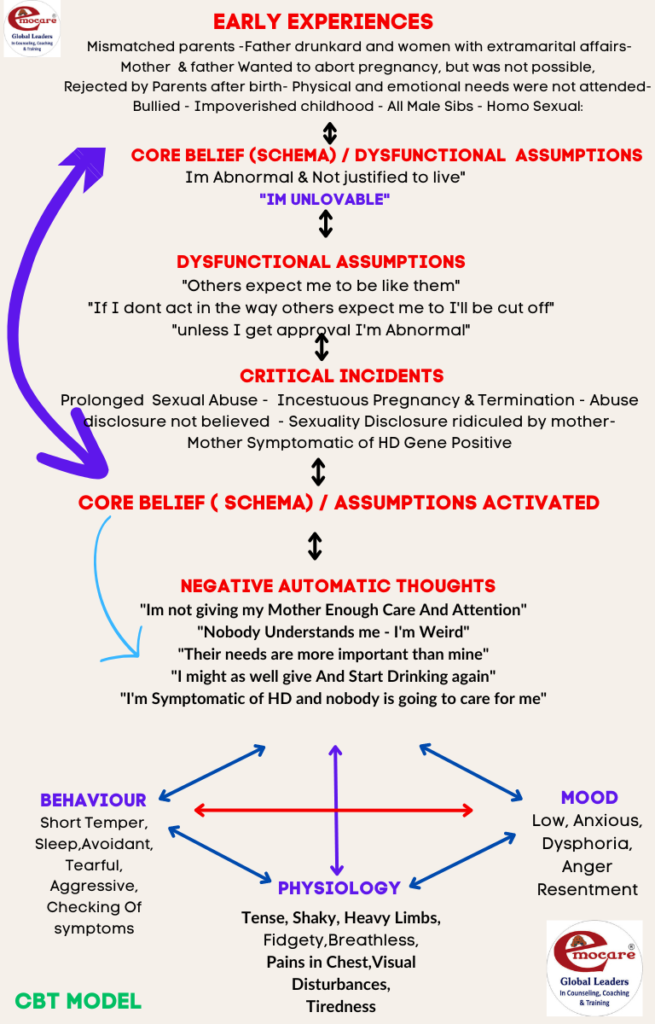

Understanding Cognitive Behaviour Therapy and Symptoms of PTSD
https://www.youtube.com/watch?v=Nktr6ZLUJvQWhat is Cognitive Behaviour Therapy?
Cognitive Behaviour Therapy (CBT) is a type of psychotherapy that focuses on identifying and changing negative thought patterns and behaviors. It is based on the idea that our thoughts, feelings, and behaviors are interconnected, and that by changing our thoughts, we can change our emotions and actions.
What is the Beck Model?
The Beck Model, developed by Aaron Beck, is a cognitive therapy approach that aims to help individuals identify and modify their automatic negative thoughts. It is commonly used in CBT to treat various mental health conditions, including Post-Traumatic Stress Disorder (PTSD).
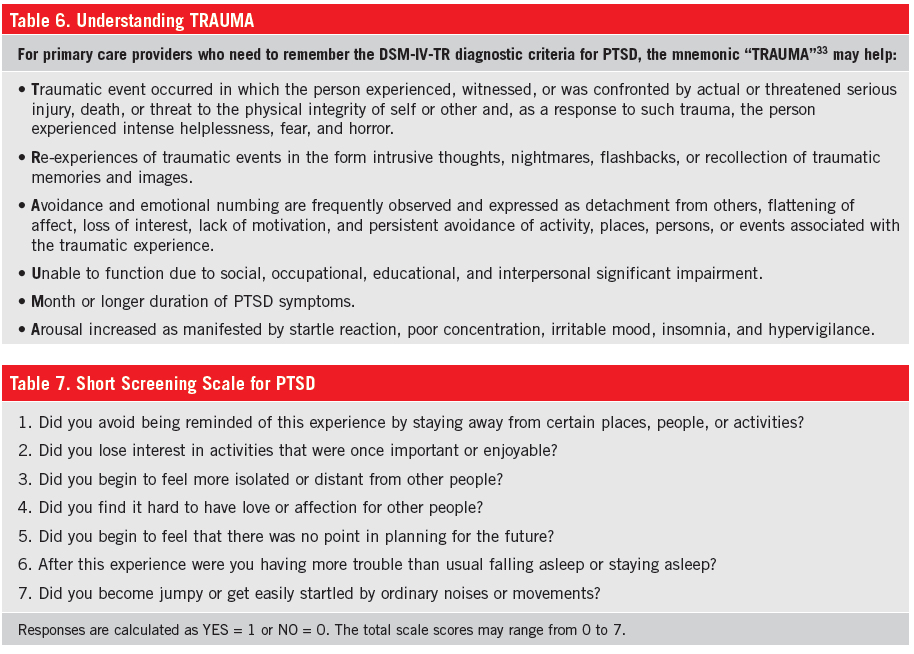
ptsd-symptoms
Symptoms created by automatic negative thoughts in PTSD
Individuals suffering from PTSD often experience a range of symptoms resulting from automatic negative thoughts triggered by traumatic events. These symptoms can include:
- Recurrent intrusive thoughts or memories
- Nightmares or flashbacks
- Intense distress or physiological reactions when exposed to triggers
- Avoidance of reminders of the traumatic event
- Negative changes in mood or cognition
- Hyperarousal or hypervigilance
Behavioural symptoms in PTSD
Behavioural symptoms in PTSD can manifest as avoidance of certain places, people, or activities associated with the traumatic event. Individuals may also exhibit changes in their sleep patterns, irritability, or aggressive behavior.
Motivation in PTSD
In PTSD, motivation can be affected due to the negative impact of the traumatic event on an individual’s thoughts and emotions. They may experience a lack of interest or pleasure in activities they once enjoyed, as well as a decreased drive to engage in daily tasks or pursue goals.
Affective symptoms in PTSD
Affective symptoms in PTSD refer to the emotional changes experienced by individuals. These can include feelings of sadness, guilt, shame, anger, fear, or a sense of emotional numbness. Mood swings and difficulty experiencing positive emotions may also be present.
Cognitive symptoms in PTSD
Cognitive symptoms in PTSD involve changes in thinking patterns. This can include negative self-perceptions, distorted beliefs about oneself or the world, difficulty concentrating or remembering details of the traumatic event, and excessive worry or rumination.
Somatic symptoms in PTSD
Somatic symptoms in PTSD are physical manifestations of the condition. These can include headaches, stomachaches, muscle tension, fatigue, changes in appetite or weight, and other physical discomforts that may arise as a result of the traumatic experience.
In conclusion, Cognitive Behaviour Therapy (CBT) and the Beck Model offer effective approaches for addressing the symptoms of PTSD. By targeting negative thoughts and behaviors, individuals can work towards managing and overcoming the challenges associated with this condition.
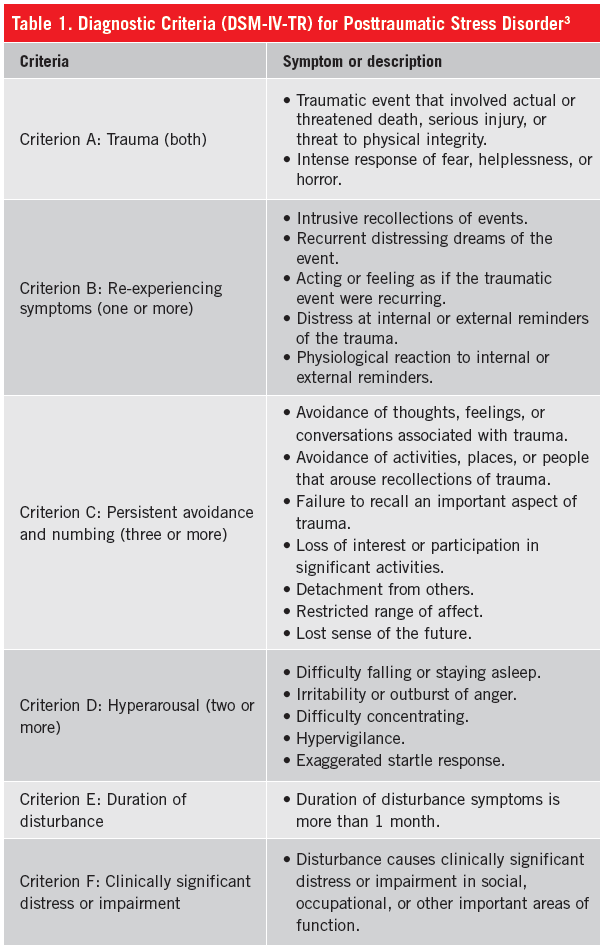

Understanding Motivation: 50 Habits to Foster Success in Life
https://www.youtube.com/watch?v=0IQozBD0xOghttps://www.youtube.com/watch?v=PGUdWfB8nLghttps://www.youtube.com/watch?v=V-UsGuZHAMAhttps://www.youtube.com/watch?v=Tuw8hxrFBH8
Have you ever wondered what drives individuals to achieve their goals and succeed in life? The answer lies in motivation. Motivation is the internal force that compels us to take action, stay focused, and persevere in the face of challenges. It is the key to unlocking our full potential and achieving our dreams.
While motivation can be elusive at times, there are habits that can help cultivate and sustain it. In this article, we will explore 50 habits that can fuel your motivation and propel you towards success.
1. Set Clear Goals
Having clear and specific goals provides direction and purpose. Write down your goals and break them down into smaller, manageable steps.
2. Create a Vision Board
A vision board is a visual representation of your goals and dreams. Display images and words that inspire you and remind you of what you want to achieve.
3. Practice Positive Affirmations
Positive affirmations are statements that reinforce positive beliefs about yourself and your abilities. Repeat affirmations daily to boost your confidence and motivation.
4. Develop a Growth Mindset
A growth mindset is the belief that abilities and intelligence can be developed through dedication and hard work. Embrace challenges as opportunities for growth.
5. Surround Yourself with Motivated Individuals
Surrounding yourself with motivated individuals can inspire and encourage you to stay motivated. Seek out mentors, join groups, or attend events that foster motivation.
6. Practice Self-Care
Take care of your physical, mental, and emotional well-being. Get enough sleep, eat nutritious food, exercise regularly, and engage in activities that bring you joy.
7. Break Tasks into Smaller Steps
Large tasks can feel overwhelming and demotivating. Break them down into smaller, more manageable steps to make progress and maintain motivation.
8. Celebrate Small Wins
Recognize and celebrate your achievements, no matter how small. This boosts your confidence and motivates you to continue working towards your goals.
9. Learn from Failure
Failure is a natural part of the journey towards success. Instead of being discouraged, view failures as opportunities to learn and grow.
10. Find Your Why
Identify your purpose and the reasons behind your goals. Understanding your “why” provides a deeper sense of motivation and commitment.
11. Practice Time Management
Effective time management allows you to prioritize tasks and allocate time for important activities. This helps prevent procrastination and keeps you on track.
12. Seek Continuous Learning
Never stop learning. Seek out new knowledge and skills that are relevant to your goals. This keeps your mind engaged and your motivation high.
13. Stay Persistent
Success rarely comes overnight. Stay persistent and keep pushing forward, even when faced with obstacles and setbacks.
14. Embrace Change
Change is inevitable. Embrace it and see it as an opportunity for growth and improvement.
15. Practice Gratitude
Expressing gratitude for what you have fosters a positive mindset and increases motivation. Take time each day to reflect on the things you are grateful for.
16. Visualize Success
Visualize yourself achieving your goals and experiencing success. This helps create a positive mindset and fuels motivation.
17. Develop a Morning Routine
A morning routine sets the tone for the rest of the day. Incorporate activities that energize and motivate you to start your day on a positive note.
18. Break Bad Habits
Identify and break any habits that are hindering your progress. Replace them with positive habits that support your goals.
19. Seek Feedback
Feedback provides valuable insights and helps you improve. Seek feedback from trusted individuals who can offer constructive criticism.
20. Practice Mindfulness
Be present in the moment and fully engaged in your activities. Mindfulness reduces stress and increases focus and motivation.
21. Take Risks
Stepping outside of your comfort zone and taking calculated risks can lead to personal and professional growth. Embrace opportunities that challenge you.
22. Find Inspiration in Others
Read biographies or success stories of individuals who have achieved great things. Their journeys can inspire and motivate you.
23. Stay Organized
A cluttered environment can distract and demotivate. Keep your physical and digital spaces organized to promote focus and productivity.
24. Practice Self-Reflection
Regularly reflect on your progress and identify areas for improvement. This self-awareness helps maintain motivation and growth.
25. Take Breaks
Allow yourself breaks throughout the day to recharge and avoid burnout. Short breaks can actually increase productivity and motivation.
26. Embrace Failure as a Learning Opportunity
Failure is not the end; it is an opportunity to learn and grow. Analyze what went wrong and use that knowledge to improve.
27. Develop a Support System
Surround yourself with supportive individuals who believe in your abilities and goals. They can provide encouragement and motivation when you need it.
28. Practice Visualization
Visualize yourself achieving your goals in vivid detail. This technique helps reinforce your motivation and focus.
29. Set Realistic Expectations
Set goals and expectations that are achievable and within your control. Unrealistic expectations can lead to disappointment and demotivation.
30. Keep a Journal
Writing in a journal allows you to reflect on your progress, express your thoughts and emotions, and track your achievements. It can also serve as a source of motivation during challenging times.
31. Find Balance
Balance your work, personal life, and hobbies. Overworking can lead to burnout and decreased motivation.
32. Practice Self-Discipline
Develop self-discipline by setting boundaries, sticking to schedules, and following through on commitments. This strengthens your motivation and builds character.
33. Avoid Comparison
Comparing yourself to others can be demotivating. Focus on your own progress and celebrate your unique journey.
34. Take Care of Your Physical Health
Physical health plays a crucial role in motivation. Eat a balanced diet, exercise regularly, and get enough rest to maintain optimal energy levels.
35. Seek Inspiration from Nature
Spending time in nature can be rejuvenating and inspiring. Take walks, go hiking, or simply sit and appreciate the beauty around you.
36. Stay Curious
Curiosity fuels motivation and encourages continuous learning. Stay curious about the world around you and seek out new experiences.
37. Practice Effective Communication
Clear and effective communication helps avoid misunderstandings and keeps everyone aligned towards common goals. This fosters motivation within teams and relationships.
38. Break Monotony
Vary your routine and introduce new activities to prevent boredom and maintain motivation. Add excitement and novelty to your daily life.
39. Find Meaning in Your Work
Connect your work to a larger purpose or meaning. Understanding how your work contributes to something greater can increase motivation.
40. Take Action
Don’t wait for motivation to strike; take action and start working towards your goals. Motivation often follows action.
41. Practice Self-Compassion
Be kind and compassionate towards yourself. Treat yourself with the same kindness and understanding you would offer to a friend.
42. Embrace Challenges
Challenges provide opportunities for growth and development. Embrace them and view them as stepping stones towards success.
43. Learn from Mentors
Seek guidance from mentors who have achieved what you aspire to. Learn from their experiences and apply their wisdom to your own journey.
44. Stay Focused
Avoid distractions and stay focused on your goals. Practice mindfulness techniques to improve your ability to concentrate.
45. Find Joy in the Process
Enjoy the journey towards your goals. Find joy in the small victories and the progress you make along the way.
46. Practice Self-Confidence
Believe in your abilities and have confidence in yourself. Surround yourself with positive affirmations and challenge self-doubt.
47. Take Responsibility
Take ownership of your actions and decisions. This empowers you and increases your motivation to succeed.
48. Embrace Feedback
View feedback as an opportunity for growth and improvement. Embrace constructive criticism and use it to enhance your skills.
49. Stay Committed
Stay committed to your goals, even when faced with challenges. Remind yourself of your “why” and keep pushing forward.
50. Celebrate Your Achievements
Celebrate your achievements, both big and small. Take time to acknowledge and appreciate your progress.
Incorporating these habits into your daily life can help foster and sustain motivation. Remember, motivation is not a constant state; it requires consistent effort and nurturing. By cultivating these habits, you can fuel your motivation and pave the way towards success in all areas of your life.
Learn More
Understanding Sexual Orientation and Factors for a Healthy Sex Life
Please click the below to get the sexual orientation questionaire.
https://drive.google.com/file/d/1WlJP4G8spnUH828JZFarX0-SCT-DPRa3/view?usp=sharing
Sexual orientation refers to an individual’s enduring pattern of emotional, romantic, and/or sexual attractions to men, women, both genders, or none. It is an intrinsic aspect of a person’s identity and can be experienced as heterosexual, homosexual, bisexual, or asexual.
It is important to note that sexual orientation is not a choice or something that can be determined by external factors. It is a deeply personal and individual aspect of one’s identity.
When it comes to checking the sexual orientation of a partner, it is crucial to approach the topic with respect, sensitivity, and open communication. It is not appropriate to assume or try to determine someone’s sexual orientation without their consent.
Instead, focus on fostering a safe and supportive environment where both partners can openly discuss their feelings, desires, and experiences. Trust and understanding are key in any relationship, and this extends to discussions about sexual orientation.
A healthy and satisfying sex life is influenced by various factors. While each individual and relationship is unique, here are 20 important factors that can contribute to a fulfilling sexual experience:
- Communication and openness
- Consent and boundaries
- Mutual respect and trust
- Emotional intimacy
- Physical attraction
- Variety and experimentation
- Understanding and empathy
- Shared values and beliefs
- Compatibility
- Sexual compatibility
- Exploration of fantasies
- Foreplay and arousal techniques
- Stress management
- Body positivity
- Self-confidence
- Health and well-being
- Intimacy outside the bedroom
- Continued learning and growth
- Adaptability and flexibility
- Resolving conflicts constructively
Remember, a healthy sex life is not solely determined by sexual orientation but by the mutual satisfaction, understanding, and fulfillment of both partners’ needs and desires.
Learn More
Understanding Sexual Orientation and Factors for a Healthy Sex Life
Sexual orientation refers to an individual’s enduring pattern of emotional, romantic, and/or sexual attractions to men, women, both genders, or none. It is an intrinsic aspect of a person’s identity and can be experienced as heterosexual, homosexual, bisexual, or asexual.
It is important to note that sexual orientation is not a choice or something that can be determined by external factors. It is a deeply personal and individual aspect of one’s identity.
When it comes to checking the sexual orientation of a partner, it is crucial to approach the topic with respect, sensitivity, and open communication. It is not appropriate to assume or try to determine someone’s sexual orientation without their consent.
Instead, focus on fostering a safe and supportive environment where both partners can openly discuss their feelings, desires, and experiences. Trust and understanding are key in any relationship, and this extends to discussions about sexual orientation.
A healthy and satisfying sex life is influenced by various factors. While each individual and relationship is unique, here are 20 important factors that can contribute to a fulfilling sexual experience:
- Communication and openness
- Consent and boundaries
- Mutual respect and trust
- Emotional intimacy
- Physical attraction
- Variety and experimentation
- Understanding and empathy
- Shared values and beliefs
- Compatibility
- Sexual compatibility
- Exploration of fantasies
- Foreplay and arousal techniques
- Stress management
- Body positivity
- Self-confidence
- Health and well-being
- Intimacy outside the bedroom
- Continued learning and growth
- Adaptability and flexibility
- Resolving conflicts constructively
Remember, a healthy sex life is not solely determined by sexual orientation but by the mutual satisfaction, understanding, and fulfillment of both partners’ needs and desires.
Learn More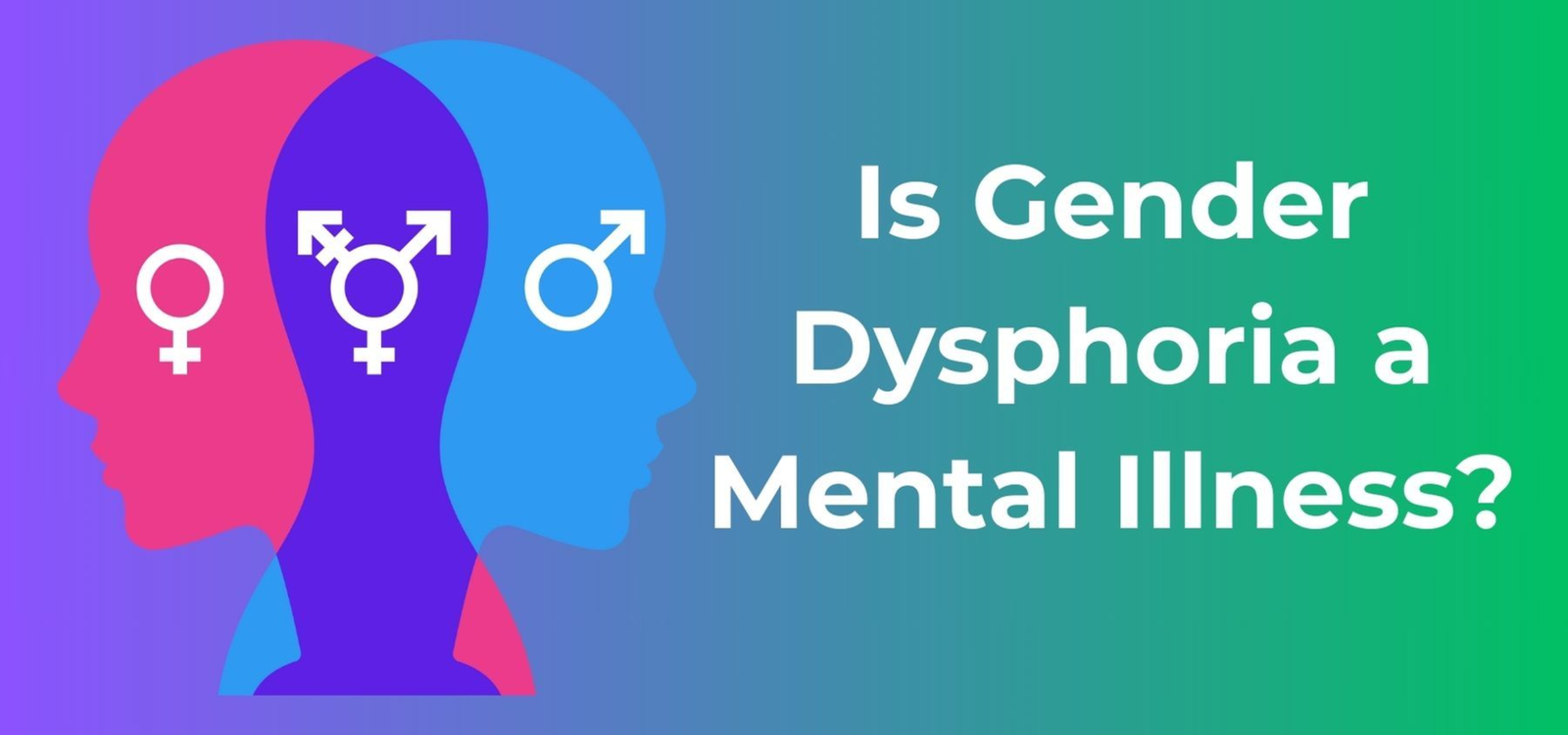
Understanding Gender Dysphoria Spectrum: A Guide to DSM-5-TR
Introduction
The Diagnostic and Statistical Manual of Mental Disorders, Fifth Edition, Text Revision (DSM-5-TR) is a comprehensive guide used by mental health professionals for diagnosing and classifying mental disorders. One of the conditions addressed in the DSM-5-TR is Gender Dysphoria Spectrum, which refers to a range of experiences related to gender identity.
Definition of Gender Dysphoria Spectrum as per DSM-5-TR
Gender Dysphoria Spectrum, as defined by the DSM-5-TR, encompasses a variety of experiences where individuals may feel a disconnect between their assigned gender at birth and their gender identity. It includes individuals who may identify as transgender, non-binary, or gender nonconforming.
Symptoms of Gender Dysphoria Spectrum as per DSM-5-TR
The DSM-5-TR outlines several common symptoms that may be present in individuals experiencing Gender Dysphoria Spectrum. These symptoms may include:
- Strong and persistent feelings of discomfort or distress related to one’s assigned gender
- A desire to be recognized and treated as a different gender
- A preference for clothing, activities, or roles typically associated with the opposite gender
- A strong desire to alter one’s physical appearance to align with their gender identity
- Significant distress or impairment in social, occupational, or other important areas of functioning
Diagnostic Classification of Gender Dysphoria Spectrum as per DSM-5-TR
The DSM-5-TR provides a diagnostic classification for Gender Dysphoria Spectrum. It recognizes that individuals may fall into different subcategories based on their age and development. These subcategories include:
- Gender Dysphoria in Children
- Gender Dysphoria in Adolescents and Adults
- Posttransition Gender Dysphoria
- Subthreshold Gender Dysphoria
Diagnostic Criteria Sets for Gender Dysphoria Spectrum as per DSM-5-TR
The DSM-5-TR provides specific diagnostic criteria sets for each subcategory of Gender Dysphoria Spectrum. These criteria sets outline the symptoms and duration required for a diagnosis. Mental health professionals use these criteria to assess and diagnose individuals experiencing Gender Dysphoria Spectrum.
Subcategories of Gender Dysphoria Spectrum
1. Gender Dysphoria in Children: This subcategory applies to individuals who experience a marked incongruence between their assigned gender and their experienced gender for at least six months. The symptoms may include a strong desire to be of the opposite gender, a preference for cross-gender roles, and a dislike of one’s sexual anatomy.
2. Gender Dysphoria in Adolescents and Adults: This subcategory applies to individuals who experience a marked incongruence between their assigned gender and their experienced gender for at least six months. The symptoms may include a strong desire to be of the opposite gender, a desire to be treated as the opposite gender, and a strong conviction that one has the typical feelings and reactions of the opposite gender.
3. Posttransition Gender Dysphoria: This subcategory applies to individuals who have transitioned to the desired gender and continue to experience distress or impairment related to their gender identity. The symptoms may include a desire for further physical interventions, persistent discomfort with the primary or secondary sexual characteristics of the desired gender, and a strong desire to have the primary or secondary sexual characteristics of the desired gender.
4. Subthreshold Gender Dysphoria: This subcategory applies to individuals who experience symptoms of Gender Dysphoria Spectrum but do not meet the full criteria for a diagnosis in any of the other subcategories. These individuals may still experience distress or impairment related to their gender identity.
Conclusion
The DSM-5-TR provides a comprehensive framework for understanding and diagnosing Gender Dysphoria Spectrum. By recognizing the diverse experiences and subcategories within this spectrum, mental health professionals can better support individuals and provide appropriate care. It is important to approach Gender Dysphoria Spectrum with empathy, respect, and a commitment to affirming each individual’s gender identity.

